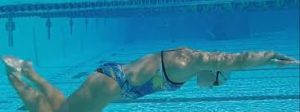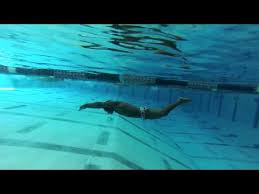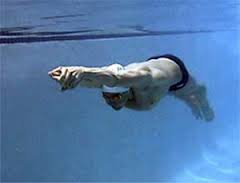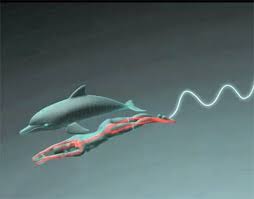Swimmers tend to think of their sport in simple terms. There are four different strokes, and each of those strokes is a combination of different kicks and pulls. We train the kicks, practice the pulls, and when we race we do them as fast as we can. There is, however, a common thread between the four strokes that is often overlooked: underwater fly kick.
You use it, alot
Every push from the wall and every race start is followed by an underwater fly kick. Even in breaststroke, swimmers get one underwater fly kick to help maintain speed through to their breakout. Why, then, is this crucial component of swimming left by the wayside? Why are we not  spending the same amount of time on an underwater fly kick that we are on the other four strokes, considering how often we use it?
spending the same amount of time on an underwater fly kick that we are on the other four strokes, considering how often we use it?
Expectation vs. Reality
We fall into habits pretty easily. We hit snooze on our alarms a particular number of times in the morning. Then we tie our shoes a certain way, and we swim the same way every practice. Habits can be great, but they can also be troublesome, especially if they’ve come from a place of laziness. A lazy swimmer may do one or two underwater fly kicks off each wall if any. They do them because they know they’re supposed to, but they don’t put much thought into it. This is a problem because it separates expectation from reality.
Form a good habit
Coaches expect their athletes to perform a particular way in practice. At the beginning of each season, coaches try to get swimmers into good habits. These habits include keeping their water bottle on the side of the pool and leaving their goggles on between sets. Coaches also expect athletes to be doing underwater fly kick off of each wall. However, for some reason don’t spend much time teaching them how to do it well.
The reality is that swimmers don’t see underwater fly kick as an equally important part of their training. This is compared to meters spent executing what’s written on the board fly kick is just as important. When coaches ask for freestyle, swimmers do freestyle. When coaches ask for 10 underwater fly kicks off each wall during a freestyle set, guess what happens? Coaches need to set clearer expectations for swimmers so that they can change the reality of their training.
ask for freestyle, swimmers do freestyle. When coaches ask for 10 underwater fly kicks off each wall during a freestyle set, guess what happens? Coaches need to set clearer expectations for swimmers so that they can change the reality of their training.
Creating value for underwater fly kick
There’s no denying the science behind the underwater fly kick. In streamlined position with both legs kicking small and fast, it’s the quickest way to move through the water. We see this fact evidenced again and again when swimmers like Ryan Lochte and Ryan Hoffer. Who uses this skill to their advantage in major competitions like Speedo Junior Championships and the Olympics.
 If that’s not enough evidence to get swimmers valuing underwater fly kick, consider that FINA allows 15 metres of underwater swimming in fly, back, and free. In a standard short course training pool, that means swimmers could potentially be underwater fly kicking more than “actually swimming”. If laziness is a component of habit development, this seems like a good way to incorporate it into training habits. Why swim more than you have to?
If that’s not enough evidence to get swimmers valuing underwater fly kick, consider that FINA allows 15 metres of underwater swimming in fly, back, and free. In a standard short course training pool, that means swimmers could potentially be underwater fly kicking more than “actually swimming”. If laziness is a component of habit development, this seems like a good way to incorporate it into training habits. Why swim more than you have to?
The Fifth Stroke
Finally, swimmers use it all the time! Swimming experts have been calling underwater fly kick “the fifth stroke” for years. This because it’s such an important element of the sport. Consider the time and effort toddlers put into learning to walk; they fall, they cry, they get back up and keep going. After a while, walking becomes second nature to them. Then over time, they use that newfound skill for the rest of their lives. Underwater fly kick is like walking, swimmers use it to help get from point A to point B. Even if there’s something else used in the middle (much like walking to your car, driving to work, and walking to your destination from the parking lot).
To sum up.
In short, the underwater fly kick is important. Swimmers need to understand its importance so that they appreciate how much it can help them. Not only in their training but more importantly their racing. Coaches need to set clear expectations about how to use it. Athletes, be inspired to use this skill to your advantage. But know that you must train it just as you train your four strokes. Coaches: know that what you ask for is what you get, and ask your athletes to perform the way you want them to.
